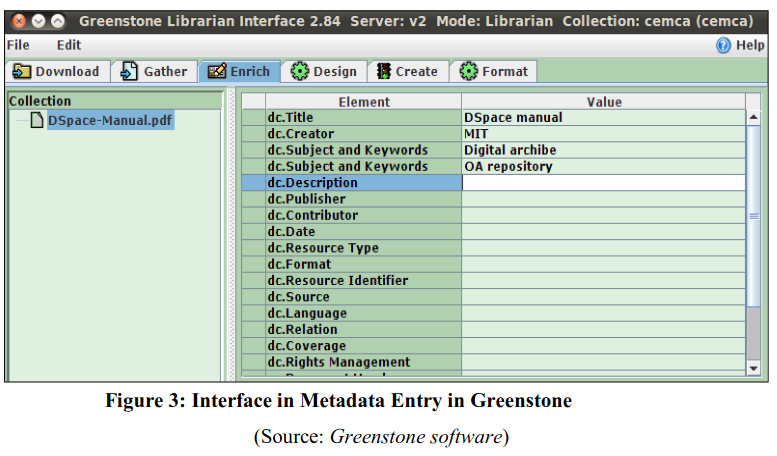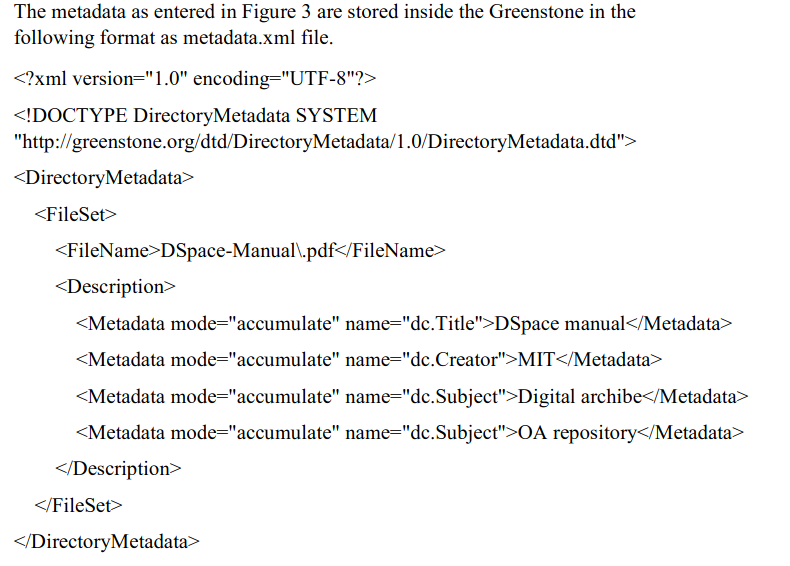1.4 Generic Metadata Schemas
A large number of standards have evolved for describing electronic resources, but the majorities are concerned with describing very specific resources. The formats like TEI (Text Encoding Initiative), FGDC (Federal Geographic Data Committee), GILS (Global Information Locator Service), OAI (Open Archive Initiative) etc. have been developed to operate within a narrowly defined subject field and generally not suitable for the description of a wider range of resources. These metadata schemas are complex in nature and thereby geared towards creation by experts and interpretation by computers. The Dublin Core Metadata Element Set (DCMES) or Dublin-core is a small set of resource description categories which is notably different from many of the other metadata schemas due to its ease of use and interoperability. The Dublin Core Metadata Initiative (DCMI), an international community has led the development of metadata components that enhances cross-disciplinary resource discovery. The mission of DCMI is to develop an easy and seamless mechanism for searching and indexing web resources through – i) developing metadata standards for cross-domain resource discovery; ii) defining frameworks for the interoperation of metadata sets; and iii) facilitating the development of discipline-specific metadata sets that work within the frameworks of cross-domain resource discovery and metadata interoperability. The DC element set is today a de facto standard for metadata on the web. The DC metadata set has 15 major elements and these metadata elements fall into three groups – i) elements related mainly to the Content of the resource; ii) elements related mainly to the Resource when viewed as Intellectual Property; and iii) elements related mainly to the Instantiation (Figure2). "Simple Dublin Core" is DC metadata that uses no qualifiers. It applies only main 15 elements without any qualifier. On the other hand, "Qualified Dublin Core" uses additional qualifiers to increase specificity or precision of the metadata. For example, a "Date" is a DC element which may be specified to identify a particular kind of date (date of last modification, date of publication etc.). The DCMI presently admits two broad classes of qualifier – i) Element Refinement (these qualifiers make the meaning of an element specific); and ii) Encoding Schemes (these qualifiers identify schemes that aid in the interpretation of an element value; these schemes include controlled vocabularies and formal notations e.g. a term from a set of subject headings or standard expression of a date like "2013-12-25"). DC elements are flexible enough for the description of variety of resources in different subject areas. Moreover, the meanings of the elements will be understood by most users. This quality has been achieved by DC metadata by following Six Principles:
- Intrinsicality: DC metadata is based on intrinsic data. These data refers to the property that could be identified from the intellectual content and physical form of the resource;
- Extensibility: It allows inclusion of extra descriptive materials for specialized requirements;
- Syntax Independence: It is applicable to a wide range of disciplines and application program;
- Optionality: All the DC elements are optional;
- Repeatability: All the DC elements are repeatable. For example, a resource with multiple authorship may use the "Creator" element repeatedly to accommodate all the authors; and
- Modifiability: Each element in the Dublin Core has a definition, which is self explanatory. Each element can be modified by an optional qualifier and in such cases the definition of the element is modified by the value of the qualifier.
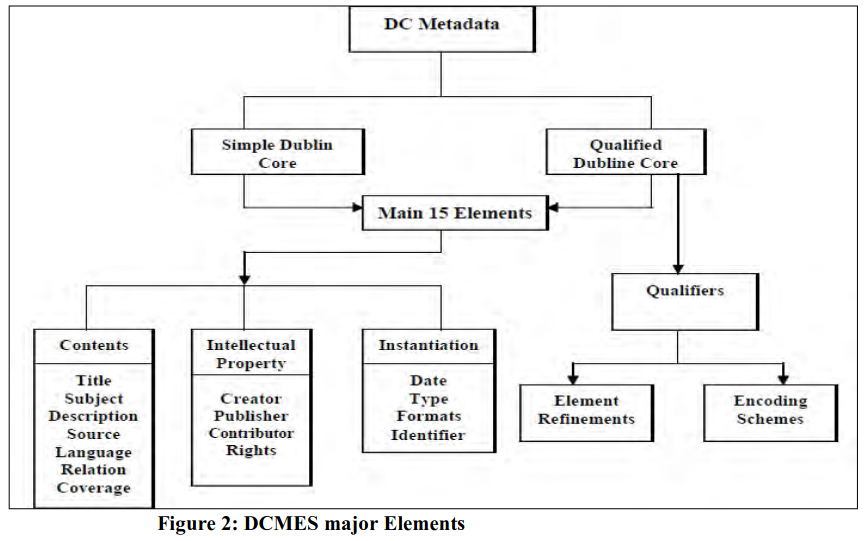
The scope of major DC elements along with element refinement provisions and recommended encoding schemes are listed below for your ready reference.
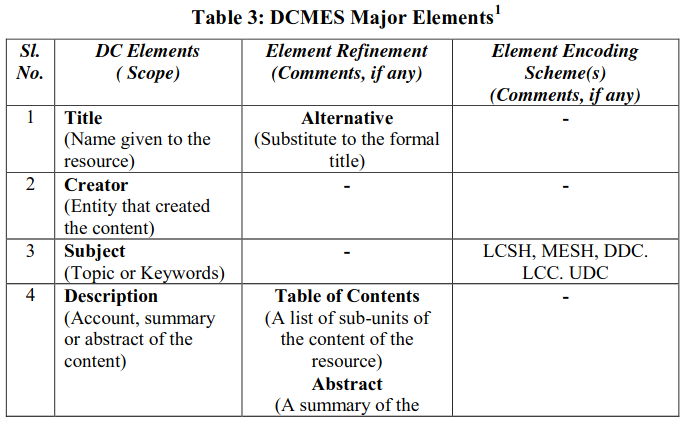
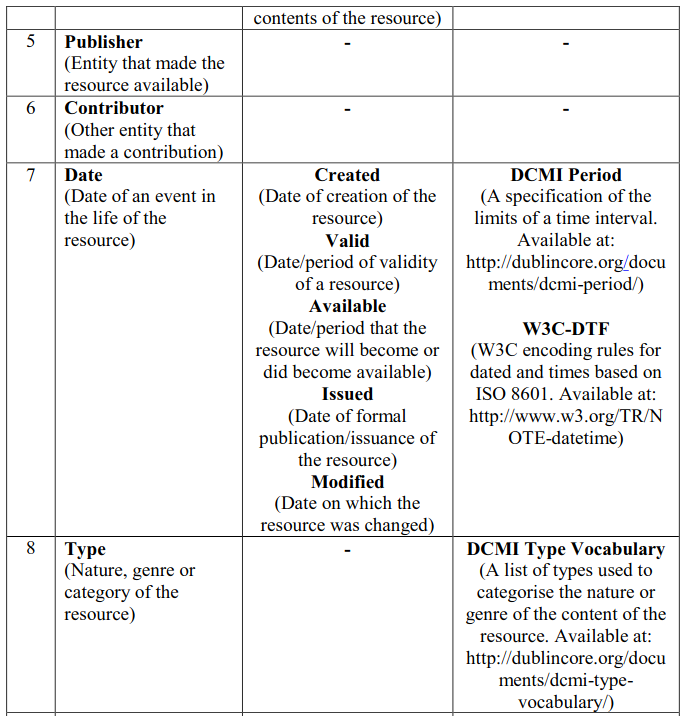
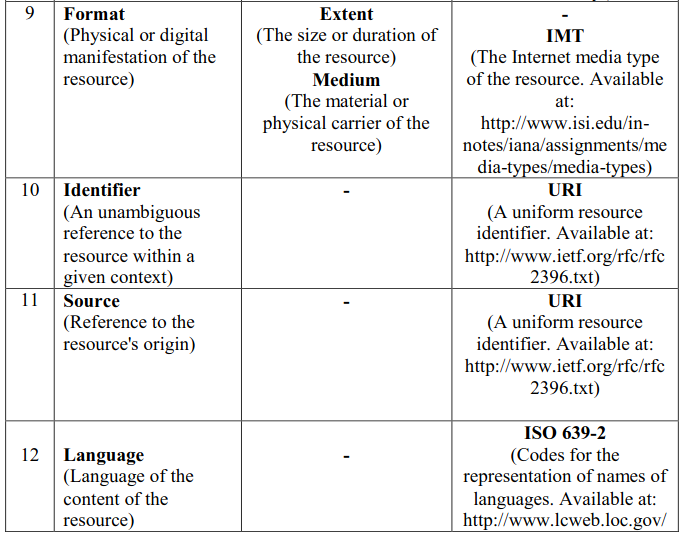
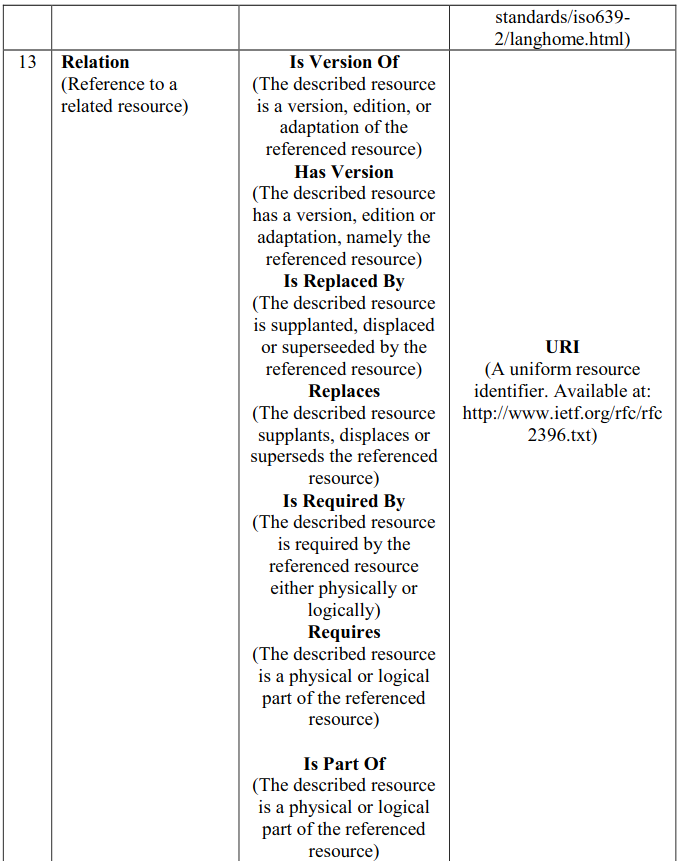
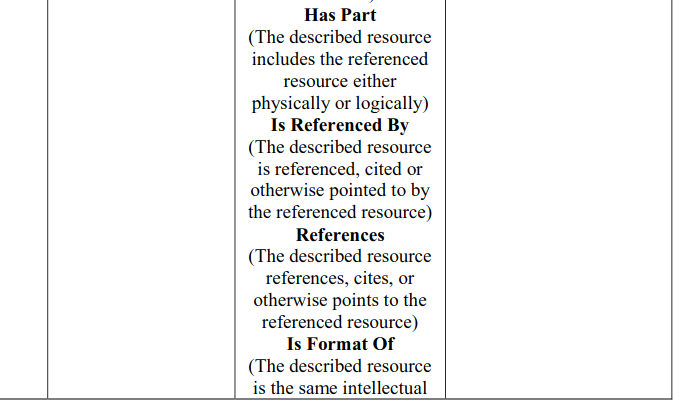
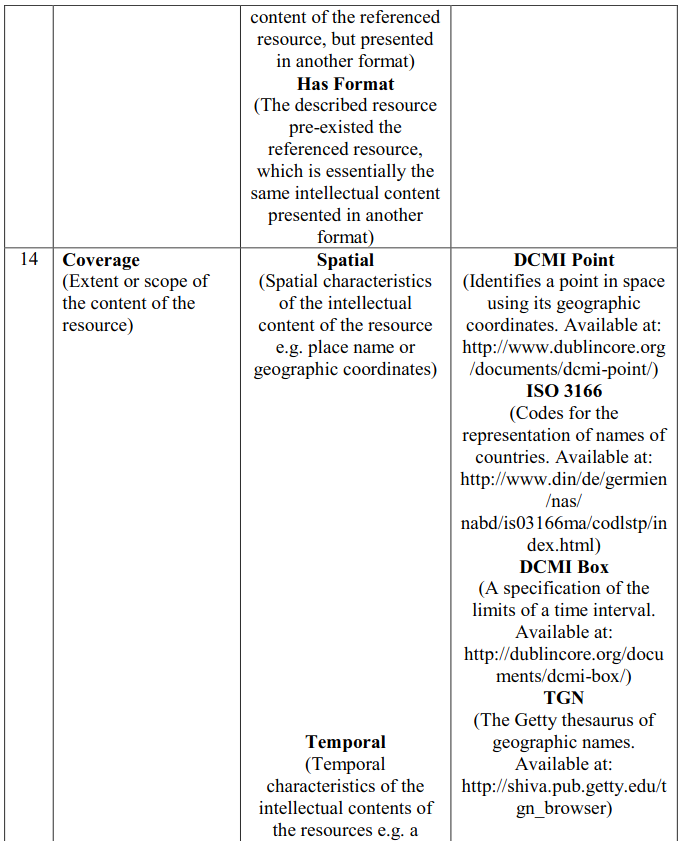
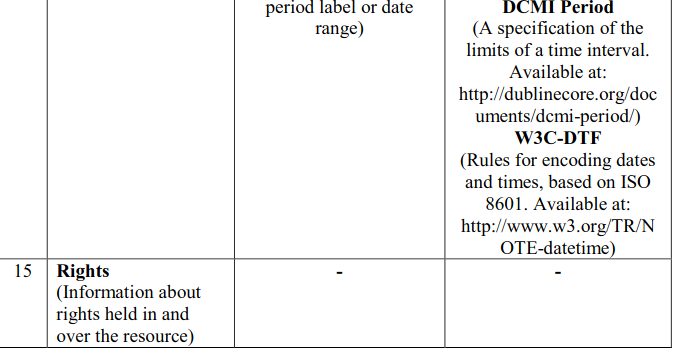
Most of the digital repository management software (e.g. Greenstone, Eprint, Dspace) include simple DCMES and qualified DCMES by default. The metadata entry interface of Greenstone is given in Figure 3. The metadata entered by submitters and/or librarians are stored in repository management software generally in XML format.
